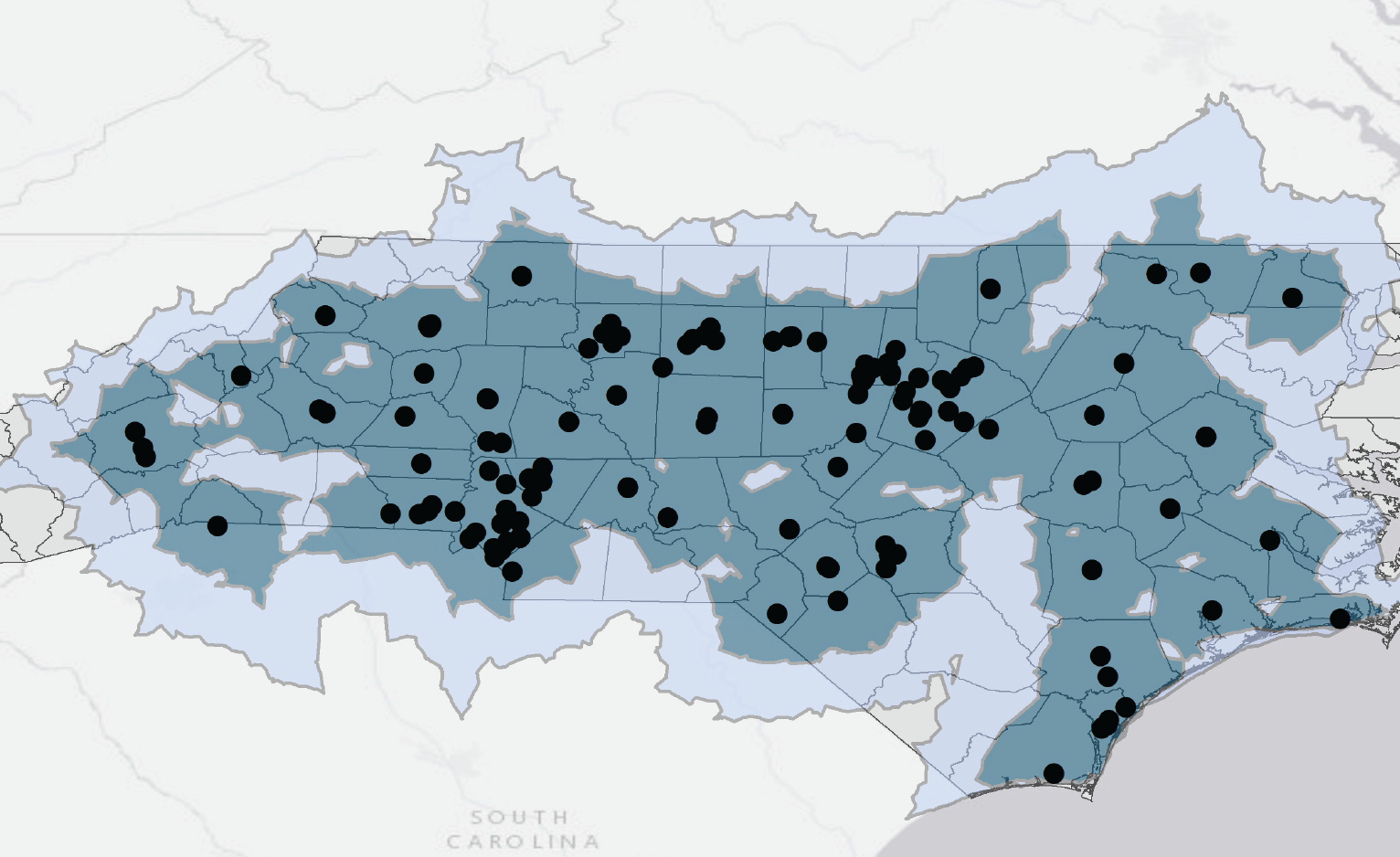How do you know if a new dental treatment will help prevent small children from going under general anesthesia? School of Dentistry Assistant Professor Beau Meyer is conducting spatial analysis to find out.
Meyer approached the Research Hub for assistance with mapping service providers using SDF, and possible health effects. Silver diamine fluoride (SDF), a dental treatment approved by the FDA in 2014, stops tooth decay, especially for children under 5 years of age. The treatment can be applied by pediatric dentists to prevent costly treatment, limit the possibility of facial swelling, and delay or avoid invasive methods of addressing advanced decay.
Meyer is mapping providers who use SDF across North Carolina to examine which communities have access to SDF treatment and which may still rely on expensive and risky surgical solutions. In order to describe these communities, Meyer created an index that combines social variables such as education, employment and median income with health determinants like access to medical care and proportion of the population with health insurance. The GIS Librarian and a Hub Research Assistant helped Meyer create maps showing varied access to SDF treatment based on the index variables. The maps indicate that urban, well-educated, affluent communities generally have greater access to SDF. Children in rural areas of North Carolina have limited access to SDF treatment, but may need it more and are more likely to need hospital access to treat their tooth decay while being put to sleep.



